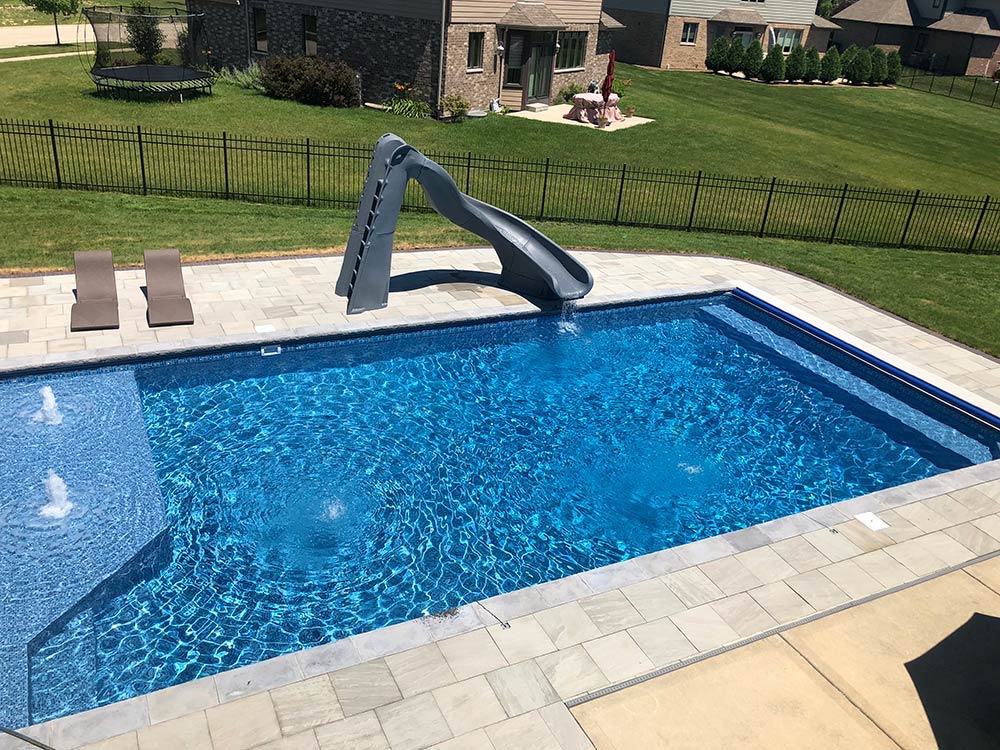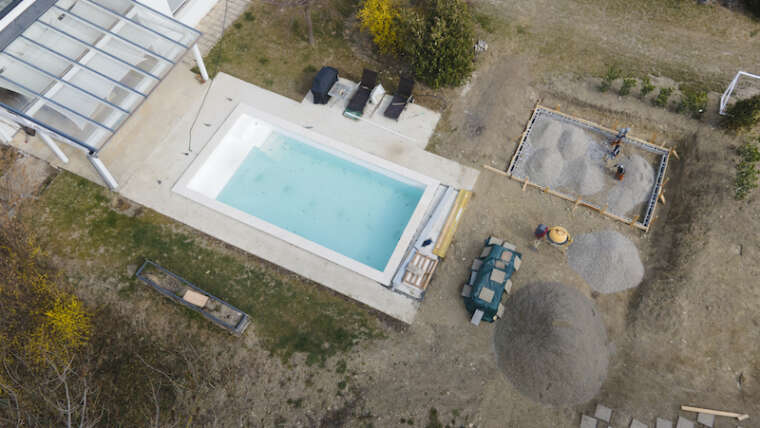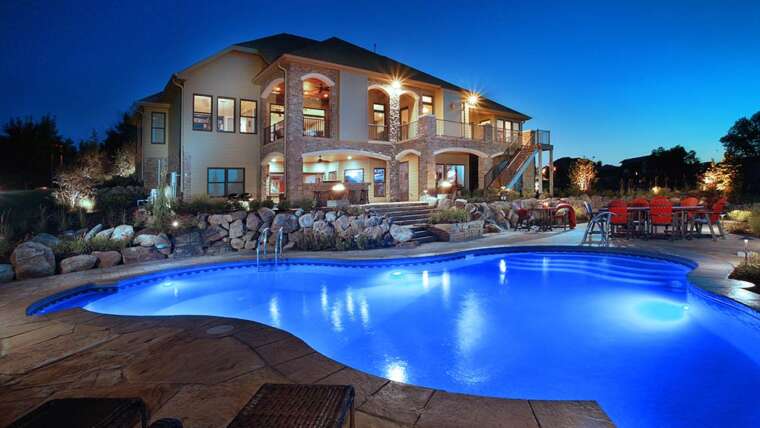Every inground swimming pool requires some basic degree of maintenance. This list includes:
✓ Checking the pH level of your water every 6 to 8 weeks
✓ Applying chlorine on a weekly basis to keep water pure
✓ Cleaning out debris from strainer baskets once a week
✓ Vacuuming weekly to pick up debris at bottom of the pool
(and the list goes on…)
While these kinds of maintenance tasks are to be expected, homeowners can quickly become frustrated when it feels like they are spending more time working on their pool than enjoying it. Here are some of the most common culprits behind these maintenance headaches.
Factors that Can Lead to Costly Inground Pool Maintenance
Use of the Wrong Materials
When you think about the walls of an inground swimming pool in the same sense as bones that support and strengthen the body, it’s easy to understand their importance in the overall picture.
Let’s consider the case where polymer panels are used to construct the walls of a vinyl pool. If the polymer panels aren’t rigid enough, they could bow in between their joints and crack in time. What’s more, if the panels aren’t resistant to corrosion, wall abrasion is more likely to occur and the life span of the vinyl liner dwindles.
Another way to think about this is from the perspective of ceramic tiles used in fiberglass pools. When these tiles are not reinforced with enough strength, they are susceptible to chip, crack or loosen. Whereas this issue can pop up far down the road amid standard wear and tear, the use of low-quality materials can cause such damage in a matter of weeks after installation.
Use of Improper Installation Techniques
If materials are the foundation of an inground swimming pool, installation is the next piece of the puzzle. While the right techniques can minimize pool care, the wrong approach can trigger new, costly issues.
Let’s think about this in the context of the excavation for the inground pool. When the hole dug is uneven by more than one inch, the base mixture poured on top is also uneven to this degree. Beyond the impact this has on a pool’s appearance, it can also lead to a series of complications: cracks due to pressure, damaged coping around the pool, inefficient skimmer operations, etc.
We can also circle back to our polymer wall example above. While the materials themselves may be at fault for costly inground pool maintenance, it’s also possible that improper control of the backfill material is to blame for wall bulges, as there isn’t enough structural support in place.
Blue Impressions Offers the Best of Both Worlds
At Blue Impressions, we pair our expertise in inground pool installation with state-of-the-art products from the world’s largest fabricated pool manufacturer: Latham. While the products themselves are designed to defend against corrosion, warping and bowing, we’re educated on best practices to use so your installed pool not only looks, but also performs as you envisioned.
Interested in talking to us about your pool installation? We’d love to hear from you. It all starts with requesting a free quote.





